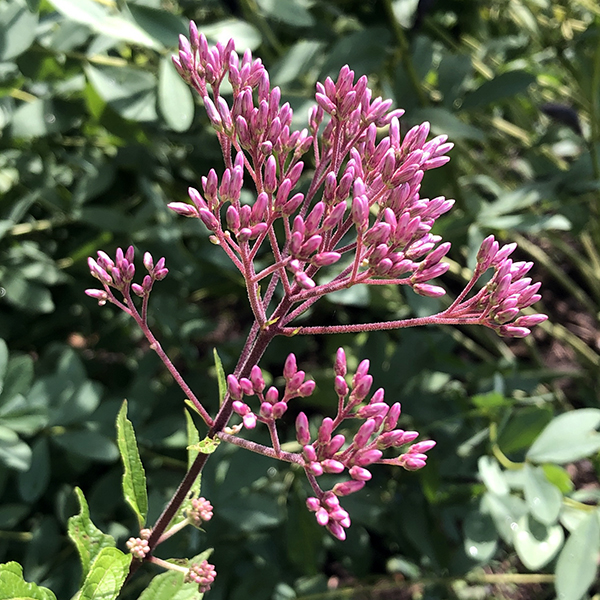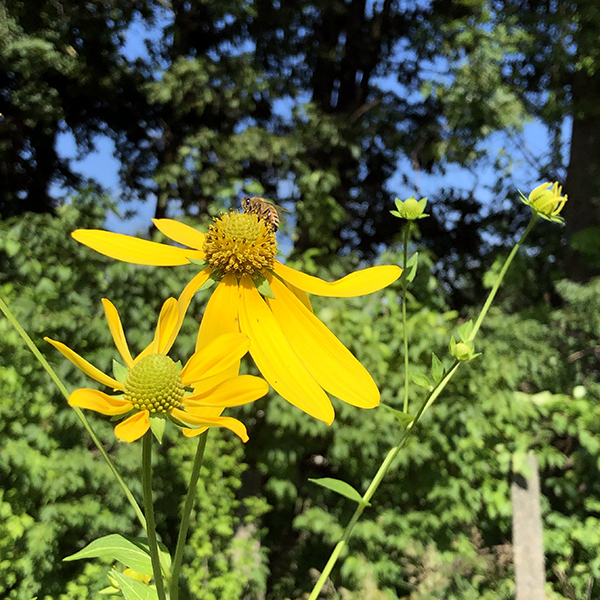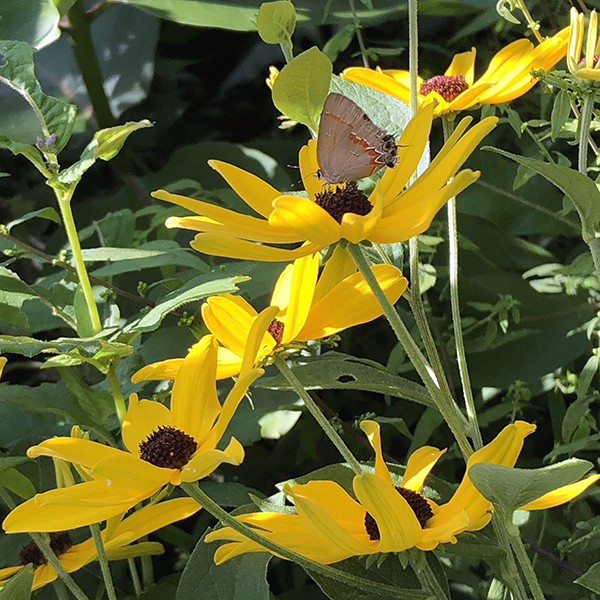
August 30, 2023| Education, Environment, LHF Environmental & Cultural Center
By: Marty and Laurie Kane
As September begins, the Lake Hopatcong Foundation native gardens continue to flourish with several varieties of late summer plants in bloom. Native plants provide nectar, pollen, and seeds that feed native butterflies, insects, birds, and other animals. It is rewarding to spot butterflies and other pollinators that help sustain our ecosystem visiting our gardens. Over the last few weeks, we have featured New York ironweed & narrowleaf mountain mint and horsemint & Culver's root. This week, we feature three more native plants currently flowering on our grounds.
 |
 |
 |
| Joe Pye weed | cutleaf coneflower | black-eyed Susan |
Joe Pye weed (Eupatorium maculatum) grows upwards of 6’ tall and is a popular plant for attracting butterflies. It is crowned with clusters of bright pink flowers with a vanilla-like fragrance in late summer and does well in full to partial sun. Pink and red dyes can be produced from the flowers and seeds. Native Americans used the roots and flowers to treat urinary and kidney ailments, and steeped roots and leaves in hot water for fever and inflammation. Both Native Americans and early European colonists used Joe Pye weed to treat typhus.
The cutleaf coneflower (Rudbeckia laciniata) grows 3’ to 4’ high in full to partial sun and blooms from July through September. The flowers, which feature yellow petals with a greenish center, attract goldfinches and butterflies. This is a host plant for the silvery checkerspot butterfly. Cutleaf coneflowers were cooked and eaten in the spring by Native Americans. The young stems can be eaten like celery or dried for later use.
Black-eyed Susan (Rudbeckia hirta) is a tough, resilient plant that is deer resistant. It grows 2' to 3', conquers clay soil, and does well in full to partial sun. The deep green foliage remains luxuriant all season and its butter-yellow flowers with shimmering red-brown centers bloom abundantly from July to October, attracting birds, butterflies, and bees. Native Americans made yellow dye from the flowers and used the plant as a medicinal herb to treat colds.
Please stop by our gardens at 125 Landing Road, Landing, and enjoy a look. You may find a new variety to try in your own garden next season!